Hexazinone
- CAS NO.:51235-04-2
- Empirical Formula: C12H20N4O2
- Molecular Weight: 252.31
- MDL number: MFCD00055526
- EINECS: 257-074-4
- SAFETY DATA SHEET (SDS)
- Update Date: 2025-01-27 09:38:02

What is Hexazinone?
Description
Hexazinone is a white crystalline solid that ispractically odorless. Molecular weight = 252.36; Boilingpoint = decomposes; FreezingMelting point= 115-117℃; .Vapor pressure= 3.0X 10厂' mmHg. Soluble in water.
The Uses of Hexazinone
Hexazinone is a triazine compound used as a preemergence or postemergence herbicide to control many annual grasses and broad-leaved weeds in noncropped land and certain crops such as alfalfa, blueberries, coffee, pecans and sugarcane
The Uses of Hexazinone
Herbicide.
Production Methods
Hexazinone is a postemergence contact herbicide effective against many annual and biennial weeds and, except for Johnson grass, most perennial weeds. Human contact is likely at the use stage, and dermal contact and inhalation are of most concern.
Definition
ChEBI: Hexazinone is a member of 1,3,5-triazines.
General Description
White crystalline solid. Corrosive eye irritant. Used as an herbicide.
Air & Water Reactions
Water soluble. Rapidly decomposed in solution by strong acids and bases.
Reactivity Profile
A triazine.
Potential Exposure
Those involved in the manufacture,formulation, and application of this contact and residualherbicide. It is a broad spectrum herbicide used in industrialand government right-of-way weed control for pipelines,drainage ditches, etc.
First aid
If this chemical gets into the eyes, remove anycontact lenses at once and irrigate immediately for at least15 min, occasionally lifting upper and lower lids. Seek med-ical attention immediately. If this chemical contacts theskin, remove contaminated clothing and wash immediatelywith soap and water. Seek medical attention immediately. Ifthis chemical has been inhaled, remove from exposure,begin rescuebreathing (using universal precautions, includ-ing resuscitation mask) if breathing has stopped and CPR ifheart action has stopped. Transfer promptly to a medicalfacility. When this chemical has been swallowed, get medi-cal attention. Give large quantities of water and inducevomiting. Do not make an unconscious person vomit.
Carcinogenicity
No carcinogenicity was detected among pups of rats fed up to 5000 ppm for 2 years. Similarly, no increase in tumors was produced by feeding up to 10,000 ppm hexazinone to mice.
Environmental Fate
Soil/Plant. Biodegrades in soil and natural waters releasing carbon dioxide. The reported half-life in soil is 1 to 6 months (Hartley and Kidd, 1987). Rhodes (1980a) found that the persistence of hexazinone varied from 4 weeks in a Delaware sandy loam to 24 weeks in a Mississippi silt loam.
Hexazinone is subject to microbial degradation (Rhodes, 1980a; Feng, 1987). Metabolites identified in soils, alfalfa and/or sugarcane include 3-(4-hydroxycyclohexyl)-6(dimethylamino)-1-methyl-1,3,5-triazine-2,4(1H,3H)-dione, 3-cyclohexyl-6-(methylamino)-1
Feng (1987) monitored the persistence and degradation of hexazinone in a silt loam soil 104 days after treatment of the herbicide. After 104 days, 66% of the hexazinone degraded via hydroxylation to form the major metabolite 3-(4-hydroxycyclohexyl)-6(dime
No traces of hexazinone or its metabolites were detected on treated blueberries (Jenson and Kimball, 1985).
Photolytic. Photodegradation products identified in aqueous hexazinone solutions following exposure to UV light (λ = 300–400 nm) were 3-(4-hydroxycyclohexyl)-6-(dimethylamino)-1-methyl-1,3,5-triazine-2,4(1H,3H)-dione, 3-cyclohexyl-6-(methylamino)
Metabolic pathway
In clay and sand soils, hexazinone is metabolized by hydroxylation at the 4-position of the cyclohexane ring and mono-N-demethylation to give [3-(4- hydroxycyclohexyl)-6-(dimethylamino)-1-methyl-1,3,5- triazine-2,4-(1H,3H )-dione], and [3-cyclohexyl-6- (methylamino)-1-methyl-1,3,5-triazine-2,4-(1H,3H )- dione, respectively. N-Demethylated metabolite is found in a comparatively higher percentage than the hydroxylated metabolite in both clay and sand soils.
storage
Color Code- -Blue: Health Hazard/Poison: Storein a secure poison location. Prior to working with thischemical you should be trained on its proper handling andstorage. Store in tightly closed containers in a cool, well-venti lated area above 32℃.
Shipping
Hexazinone is classified as Triazine pesticides,solid, toxic n.o.s. This compound requires a shipping labelof“POISONOUS/TOXIC MATERIALS.”It falls in HazardClass 6.1 and Packing Group II.
Properties of Hexazinone
| Melting point: | 97-100.5° |
| Boiling point: | 395.49°C (rough estimate) |
| Density | 1.2500 |
| refractive index | 1.6120 (estimate) |
| Flash point: | 11℃ |
| storage temp. | APPROX 4°C
|
| solubility | Chloroform (Slightly), Ethyl Acetate (Slightly, Heated) |
| pka | 2.05±0.70(Predicted) |
| form | Powder |
| color | Beige |
| Water Solubility | 33g/L(25 ºC) |
| BRN | 618801 |
| CAS DataBase Reference | 51235-04-2(CAS DataBase Reference) |
| NIST Chemistry Reference | 1,3,5-Triazine-2,4(1h,3h)-dione, 3-cyclohexyl-6-(dimethylamino)-1-methyl-(51235-04-2) |
| EPA Substance Registry System | Hexazinone (51235-04-2) |
Safety information for Hexazinone
| Signal word | Warning |
| Pictogram(s) |
 Exclamation Mark Irritant GHS07  Environment GHS09 |
| GHS Hazard Statements |
H319:Serious eye damage/eye irritation H410:Hazardous to the aquatic environment, long-term hazard |
| Precautionary Statement Codes |
P261:Avoid breathing dust/fume/gas/mist/vapours/spray. P264:Wash hands thoroughly after handling. P264:Wash skin thouroughly after handling. P273:Avoid release to the environment. P301+P312:IF SWALLOWED: call a POISON CENTER or doctor/physician IF you feel unwell. P305+P351+P338:IF IN EYES: Rinse cautiously with water for several minutes. Remove contact lenses, if present and easy to do. Continuerinsing. |
Computed Descriptors for Hexazinone
New Products
3-Iodophenylacetic acid 3-Pyridineacetonitrile, α-hydroxy- 2-Propanamine, 1-chloro-, hydrochloride (9CI) 3-(hexyloxy)-4-(pyridin-3-yl)-1,2,5-thiadiazole 2-Hexyn-1-ol Dibenzo-18-crown-6 Nickel(II) perchlorate hexahydrate, 98% 4-Bromophenylacetonitrile, 95% 3-Bromo-4-fluoroaniline, 97% Sodium tetraborate decahydrate, 98% Palladium(II) acetate, trimer, Pd 99% 4-Bromo-2-chlorotoluene, 97% N N Dimethylformamide Dimethyl Acetal (Dmf Dma) 2,3-Dichloro Benzoyl Cyanide [Side Chain] Bis(2-Chloroethyl) Amine Hydrochloride L-Glutamic Acid Diethyl Ester Hydrochloride 5-(Difluoromethoxy)-2-Mercaptobenzimidazole 1-Ethyl-3-(3-Dimethylaminopropyl)-Carbodiimide Hydrochloride [EDC Hcl] 1,4-Napthoquinone Bromoiodomethane Sodium Bicarbonate Methylene Dichloride (MDC) Ethyl Acetate Indole-3-Carbinol (I3C)Related products of tetrahydrofuran
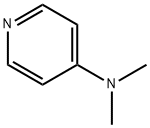

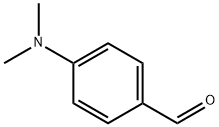
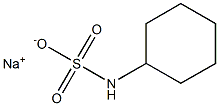

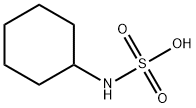

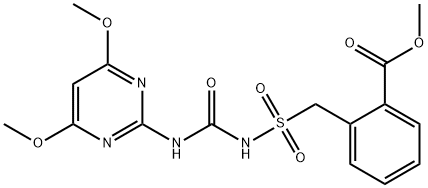
You may like
-
 Hexazinone 95% CAS 51235-04-2View Details
Hexazinone 95% CAS 51235-04-2View Details
51235-04-2 -
 Hexazinone CAS 51235-04-2View Details
Hexazinone CAS 51235-04-2View Details
51235-04-2 -
 Hexazinone CAS 51235-04-2View Details
Hexazinone CAS 51235-04-2View Details
51235-04-2 -
 Hexazinone CAS 51235-04-2View Details
Hexazinone CAS 51235-04-2View Details
51235-04-2 -
 17604-74-9 3-Pyridineacetonitrile, α-hydroxy- 98+View Details
17604-74-9 3-Pyridineacetonitrile, α-hydroxy- 98+View Details
17604-74-9 -
 Cyclohexane, (2-propynyloxy)- 67967-07-1 98+View Details
Cyclohexane, (2-propynyloxy)- 67967-07-1 98+View Details
67967-07-1 -
 3-Iodophenylacetic acid 1878-69-9 98+View Details
3-Iodophenylacetic acid 1878-69-9 98+View Details
1878-69-9 -
 132945-75-6 (S)-1-Boc-3-methanesulfonyloxy-pyrrolidine 98+View Details
132945-75-6 (S)-1-Boc-3-methanesulfonyloxy-pyrrolidine 98+View Details
132945-75-6
